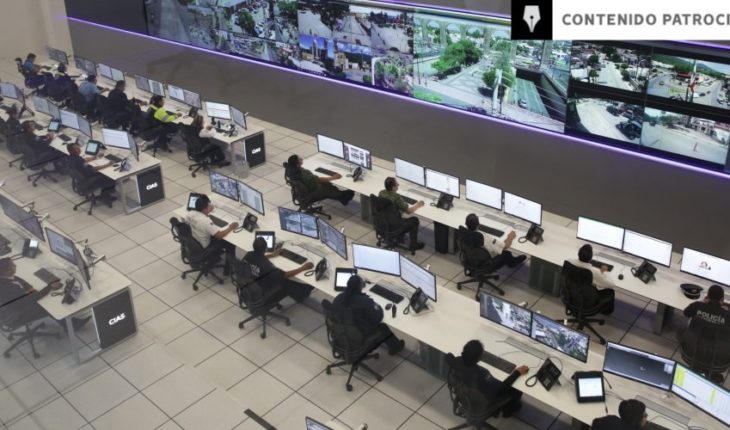the Organization of the United Nations considered that enable access to high-speed internet to the entire population of a country contributes to improve the quality of life, overcoming vulnerabilities and improve the living conditions of the people. Among the benefits of modern telecommunications is the issue of security. Broadband will enable the police and public security bodies transmit images, video, and data in seconds and secure, uninterrupted.
Use this megacarretera with standards such as LTE (from the English Long Term Evolution) means to be able to transmit real-time information for up to 1 gigabyte; that is, the equivalent of a four-hour television program. Talking about public safety, it’s images from the scene of the crime, even video, either to ask support elements or to gather evidence about criminal acts. Information to save lives.
The technology of broadband in Mexico is built on a shared network that from 2016, instrumenta Altan networks company and that by 2024 will have coverage in virtually all the national territory, allowing mobile operators to offer services of high speed to 92% of the population.
Miguel Guevara telecommunications expert recently published the article “shared network: a case of Government innovation”, which explains that the shared network cannot offer services to end users, as it is a wholesaler. “The shared network is a network of second floor that provides telecommunications services to telecommunications operators,” he wrote.
In this scenario, how can the army and the police use this technology to communicate safely in the middle of a shootout? What’s with the services of rescue and civil protection, which also require to communicate in real time to operate during an earthquake? How to upload to the forces of public security to this data when megacarretera 100% reliable and safe?
In the past year, operators that offer services of “mission-critical” or secure channels of radio communication for the national security forces have focused the debate on the update of the standards which should operate, as it is currently accurate migrate from analog technology to digital systems or IP (Internet Protocol) as a prelude to entering the broadband ecosystem.
The analysis “Aspects of competition and economic efficiency of the national network of radio communication”, of the consulting firm Agon, explains that migrate mission-critical broadband radiocommunication services requires a spectrum dedicated specifically to intelligence services or use hybrid systems, as long as these megacarreteras are enabled at 100%.
This report describes examples of international, as it is the case with Belgium, Finland and Qatar, still running on narrow band, but they compensate for multimedia services that require an LTE network or broadband. United States and in Australia from 2012, began to develop a national LTE network dedicated to mission-critical services.
“The transition to a network of commercial broadband, in complement with a network of narrow band, also implies a planning that takes some time”, explains the report in relation with which all countries have taken these decisions between 2012 and 2014. “Most of the countries have initiated a discussion and analysis on the evolution towards an LTE network for mission-critical services.” In Mexico, still pending issue that the federal Government decides if it will fully migrate is their intelligence to broadband radio communication or opt for a hybrid system.
Less antennas more connectivity since 1985, after the experience of the earthquake of September 19, when emergency communications were not integrated, Mexico opted to install a network of mission-critical technology Tetrapol TDM – developed by Airbus SLC-, deployed throughout the country. Today, this technology is migrating to its version of Tetrapol IP, but will soon also offer support services for running on broadband.
Fred Gallart, CEO for Mexico and Latin America of Airbus Secure Land Communications (SLC), explains that, as a manufacturer of Tetrapol IP standard, are currently the main operator of public safety technology of narrow band in the country, and they are prepared to start running on broadband.
“There are a number of things that come in terms of technology and we are going to provide a secure platform and encrypted end to end to be able to integrate solutions that the police and public security will need to fight crime in Mexico” says.
Today, with the devices and technology offered by Airbus (SLC), Mexican security forces can already use tools that look of the future, like sensors that allow you to know if a policeman drew his gun, for example; If you are in danger, according to your heart rate acceleration and need help urgent or even if your radio is in a horizontal position, sign that could have fallen wounded.
With broadband communication, a policeman could see with a camera the place of the crime scene, even before you arrive. “If you already know what’s going on, then you prepare mentally to act when you arrive”, said Gallart regarding possibilities that even in Mexico could now start to be assayed.
“When we talk about public safety, seconds mean much, mean a life, and you have to be certain that a message is to pass full and that only authorized personnel will be listening to that conversation. That is what we do. That is our expertise,”says the directors of Airbus (SLC).
Gallart anticipates that in Exposegurity Mexico 2019, next may, Airbus (SLC) will present (Secure MVNO) Secure Mobile Virtual network operator, designed for police, army, Fire Department and civil defence use multimedia applications in their radios, a need that is more and more urgent in the federative entities, as in Morelos, and Querétaro where the C5 are already beginning to demand this type of solutions.
The MVNO is a platform that also ensures that the investment made by the Mexican Government in Tetrapol during the past 17 years maintained its value to migrate to LTE. “There are many issues associated with the broadband technology that have not been resolved, but there needs to be standards to make the technology completely open and you can use devices and applications from different vendors on top of the LTE platform. In the case of public safety applications, all work within a parameter, that parameter is going to dictate the Mexican Government”he says.
The future arrived in Queretaro in Queretaro, auto theft is reported in real time with a call to 911, which detonates the police mobilization. When the police reached the scene of the crime, from a Tablet boletinar can the facts to your C5 and the Prosecutor’s office concerned. In a span of 40 minutes, the victim will already have an email and a SMS text message on your cell phone with the number of research which will allow you to make arrangements with an insurance company and be confident that your plates are reported as stolen, if the delin you have made improper use of the unit.
From 2016, the Queretaro were pioneers in developing this application that makes it easy to report a carjacking, which has increased the number of complaints of economic crime and will have streamlined the intelligence operations that allow the tracking of crime and eventual recovery of the stolen unit.
Coordination Queretaro (CQ-CIAS) Center has with monitoring in all municipalities through a network of 3,000 cameras. The attention of 911 calls and anonymous reporting 089 follow from there, as well as the liaison between the police, public safety and emergency, over 120 kilometers of fiber-optic and wireless links that also allow them to connect with the Prosecutor’s offices.
Pedro Toscuento González, director of the CQ-CIAS, ensures that, with the deployed technology in this center of intelligence, security and emergency bodies “can until the last corner State”. He points out that the architecture of the building and its distribution in 16 areas are based on technology from leading manufacturers in the market. “So make sure that the technology will last as long as possible and that we are at the forefront”, says.
Querétaro is one of seven States that already has migrated its Tetrapol TDM Technology Tetrapol IP. Toscuento explains that they have worked with this standard for 15 years, but that the project of the CQ meant the natural time to modernize. “When we were in the construction of the Center, had the need to expand our reach and coverage of our communication,” concerns. “We decided to bet on what’s new: Tetrapol IP technology, because part of the benefits that we saw was the sending of data.” We explore now applications that allow send video and image from the scene”.
IP transmission is a reality in Queretaro, Hidalgo, Aguascalientes, Nayarit, Colima, Tlaxcala and Morelos, entities where mission-critical services have been digitized in full. Recently, in Quintana Roo was signed a contract between Airbus (SLC), Total Play and the State Government to perform the migration. While 14 others are in hybrid mode between Tetrapol TDM and Tetrapol IP while they complete 100% its digitalization.
There are still States pending for this migration and, at the federal level, the National Security Council is awaiting receive an analysis that is entrusted to the National Polytechnic Institute to define the decisions of Government that will assume in this regard as completely enables the broadband network. The various providers of telecommunications services of inteligencia are waiting for those urgent definitions, as in every day, it means the possibility to use multimedia technology to combat organized crime and perform successful rescue in the event of accidents. It means to save lives.
translated from Spanish: How multimedia technology helps fight crime
December 10, 2018 |





